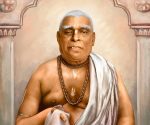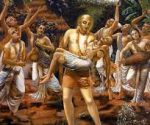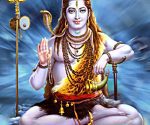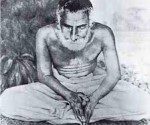How I Started Writing
June 10, 2013 (VNN) How I Started Writing (And What Became of It), by Stephen Knapp
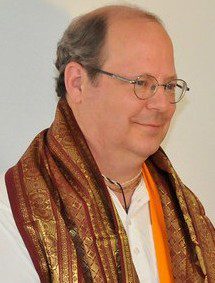 I am writing this because many times people ask me how I got into writing, especially after having written so many books and articles. So I have decided to give it a full explanation to reveal how it began, whether my writing be an artistic, intellectual or spiritual expression.
I am writing this because many times people ask me how I got into writing, especially after having written so many books and articles. So I have decided to give it a full explanation to reveal how it began, whether my writing be an artistic, intellectual or spiritual expression.
To begin with, I had always liked writing. I wrote as a means of expression and documentation, and for sharing with others my thoughts, realizations and experiences. I wrote my first science fiction story in my first grade class. As I grew, I tended to be attracted to the arts far more than athletics, even though all my neighborhood friends always played sports. Later, I also wrote poetry. Then in my early twenties I kept a journal for several years, which, later on while reading it, served as an interesting reminder of all the foolish things I’ve tried through the years, and then I threw most of it away.
I tried writing an adventure novel when I was a teenager when the James Bond series became popular. Needless to say, I never got past 20 pages. I had also taken an interest in music and seriously pursued that for 10 years, when I focused on guitar and especially bass guitar, becoming quite good at it, taking the bass into areas of being a lead instrument rather than merely a part of the rhythm section. This was back in the late 1960s and early 70s before many bass players tried to do that.
I also took an interest in painting, doing graphic designs in the psychedelic and black light genres in the late 60s. That was fun at the time. Painting lead me into being interested in photography, which started as an artistic expression, later leading me into wedding photography and doing a few hundred weddings over several years. Then I started doing what I call cultural photojournalism, which I still do today when I travel to India, developing a collection of over 18,000 slides and images I’ve taken of Indian holy places, festivals, people, historical sites, etc.
Only after I took to my spiritual pursuits and reading many books on Eastern philosophy in the early 1970s, especially those of Srila A. C. Bhaktivedanta Swami Prabhupada, did I start writing my own summaries and my own indexes to these books. Some of these were quite extensive and served as excellent reviews and study guides for later research when I needed them. This was long before they had such books on the Vedabase or computer, which made looking up topics much easier. In fact, to this day I still use those indexes that I wrote to look up the relevant references I need in my research for writing.
Later, in the 1980s, I started to think that many other people, especially westerners like me, would also probably like to have access to this information, but without having to read 20 volumes of books in order to put it altogether and understand it properly. So I started thinking that writing some good, in-depth introductory literature might fill a need, especially at the time when many people were looking more deeply into Eastern philosophy to make sense of things or to add more meaning to their lives.
WHAT MOTIVATED ME TO WRITE
One thing I saw early on was that bookstores had many metaphysical and new age and philosophical books, but many of these used no real basis of authority, were sometimes without references, and could also be merely someone’s ramblings and speculations that were misleading. And these were published books? My concern was how to get some authorized material out there that could lead people to real spirituality, and also to an accurate view of what is genuine Vedic philosophy.
Another thing I saw was the genius of Srila Prabhupada who was practically the first to make standard Eastern texts and authorized translations, like the Bhagavad-gita and the more extensive Srimad-Bhagavatam as well as others, acceptable to the general marketplace by making them attractive, both through nice covers and beautiful interior illustrations on the topics described within. He was very particular about how the books were meant to be presented and formatted, and how the interior paintings were meant to look. These were actually able to be placed in some bookstores. Nonetheless, most of these books were still distributed hand-to-hand by the devotees to others. And the activities of selling these spiritual books through the devotees was quite lucrative. But it was not something that I could do very well. The temple president would force me to go out and try, but when I would return, I would have little to show for it.
I was not very good at doing this sort of book distribution. I had no problem in talking to people who were already interested, but I was rather introverted and did not like approaching people who were strangers to me. I thought that there must be another way through which people would become attracted to this knowledge, a way in which the books would sell themselves, or a way wherein people would be interested to buy the books of their own accord. A way in which I, a shy person, could also participate in distributing this knowledge through books without having to go door-to-door or person to person. Nonetheless, many people appreciated the books that were sold by the devotees. And now there are ways of putting the books of Srila Prabhupada on book stands wherein they are attractive and easily purchased by customers. This is very important, but I also had some ideas. So, what to do?
THE TURNING POINT
While living in the ashrama and serving in the Denver temple in 1975 and 76 as a manager and treasurer, I would get notices from the Los Angeles BBT (Bhaktivedanta Book Trust) that would include quotes by Srila Prabhupada wherein he would say that he expected his disciples to read all of his books, and then they should also write according to their own realizations. This stuck with me for a long time.
In fact, I was addicted to his books. The very vibration that the books exuded kept me holding and reading them. I would go so far as to stay up late at night just to get the time to read these books. After everyone else went to sleep in the ashrama, I would light a candle and sit, using my trunk as a desk, and read and take notes. The temple president at the time got angry with me for spending all of my spare time reading. I remember he told me once that reading was for temple presidents and sannyasis, and everyone else should simply serve. I knew that was bhogus because of what I had already read from Srila Prabhupada books and the quotes I got from Los Angeles. However, I was not one to argue, at least back then, but I was also not one to give in to some poppycock. If I could not read these books, especially the new ones that were coming out, along with doing whatever other service I was scheduled to do in the temple, I would have easily left the temple and simply worked outside to feed my habit of reading his books. But I stayed in the ashrama, did my service and sadhana, and kept reading anyway.
By 1984, I stopped writing my own reviews and indexes to the BBT books, except for any new ones that were published, and started thinking of how I could start writing my own books and articles to introduce this spiritual knowledge to others. By then I was located in Detroit, living in my own apartment, and where the temple did not have a newsletter to offer and send out to their congregation. Many temples did that, but we did not have one at the time. So I volunteered to make one, like a quarterly publication, a simple four page foldout. Even the temple president wanted to have such a newsletter. So I put a few things together, interviewed the temple president on his vision for the temple, made a prototype of the newsletter and about 20 copies to show people. Everyone liked it and agreed this should go forward. So I was set to go. But the temple treasurer at the time told me that, in spite of everyone else’s approval, he was not going to give any money for the project. In an extremely rude manner, he simply said, “Sri Nandanandana, I’m not giving you any money for this.” Then he laughed in my face and smirkingly said, “Good luck.”
It was right then when I realized that if I was going to do any project that I thought was necessary and that I wanted to do to share in distributing this knowledge, even a simple quarterly newsletter, I should not expect any support from anyone. Certainly not even the temple. I was on my own and would have to do everything myself. (I did not know it at the time, but this was Krishna’s arrangement to direct me in a way to do something far bigger.) And so, even though I was disappointed, rather than getting mad or upset that someone was not supporting me and not allowing me to do this project, even when others thought it was a good idea, I merely thought of how to get around this problem, and then I made a plan.
NOT GIVING UP
The first thing was to write something. At first I thought I would write a fiction novel that would incorporate the spiritual knowledge people should understand. I had a number of ideas, but the words simply were not coming to mind, and I couldn’t write anything.
So I started to think about writing non-fiction, and then things simply exploded. I had too many things to say, too many ideas. Finally, I decided to write a home study course, which included a book on the main topics, a few tapes to listen to, a few additional transcripts of songs and things to read, and then a test, which when passed, a person would get a certificate of completion. So I started writing in my spare time. But how to finance this?
Later, I made up a business plan calculating how much money may be needed and how much income I may get back and presented it to our local GBC or Iskcon authority. Again the response was nil. Nothing was said in return, either positive or negative. Later I learned that he was having his own problems and was soon gone from Iskcon anyway. So now what to do?
So I again realized that though I knew I had a good idea and a vision of how to do it, no one else had the faith. So I would have to finance it myself. After that I got a regular job, at first as a security guard. This allowed me to do my service around the temple and then work in the evening. It also allowed me to read and study most of the time while at work. So in the morning I would write, and then I would work the evening shift and spend most of my time reading. This worked out great. And then the money I earned went towards publishing.
I then learned all about the publishing business and how to form my own publishing company, which I did as The World Relief Network. When you are a small business, you need to sound like you are big, global even, so others will be more willing to work with you, or in this case order my books. Plus, I really was trying to relieve the world of its problems by spreading spiritual knowledge. So I registered the name, got my own ISBN numbers for my books and publishing company, and whatever else I needed, so when my first book came out, in 1986, which was “The Secret Teachings of the Vedas,” it was listed in Bowker’s “Books in Print” and other directories, along with my publishing company. I printed only 100 copies at the time, a simple edition which was in rather small print. Then I advertised the home study course in a few publications. It was fun when orders would come in, but to my surprise, most people would order only the book, and only a very few ordered the whole course. That was OK with me, but it was not what I expected.
Then something happened that really surprised me. A large distributing company, Baker & Taylor, started ordering the book from me. They had obviously gotten orders for it, and they serviced both libraries and book stores. So this put everything into a different perspective. Then I realized that I needed to get more serious about this and do things more professionally.
UPGRADING THE BUSINESS
By 1987 I had been to India and had taken lots of photos and gathered lots of information on the spiritual traditions on the holy places of India. So when I sold out of the first edition of my book, I re-edited it with a more readable interior, and professional cover with a color photograph, put in a travel section with 60 or more black and white photographs, and everything else that it needed. I then had 2000 copies printed. Then I re-marketed it under my legal name of Stephen Knapp rather than my spiritual name, which seemed a little difficult for most people to say. Gradually, things started to take off.
I had divided the original manuscript into two parts. So, a few years later, the second part was made into my second book, “The Universal Path to Enlightenment,” which was a review of the basic spiritual paths and religions around the world, and the factors that were common to all of them that was also the essence of the Vedic path, concluding with the way to enlightenment in this age through chanting the holy names. Putting another travel section in it, I then published this as well. As sales picked up, I realized that this was becoming like a cottage industry.
The only thing is that publishing is a fast way to make a slow buck. In other words, you have to invest a sizable amount of money, like $5000 at that time, for a good 2000 copies of the 300 page book, which gives you a good discount on the per-book-basis (costing roughly $3 or so per book), and able to still make a profit on each book sale, selling them for $14.95 retail, or $6.93 wholesale at a 55% discount to wholesalers, or a 40% discount to retailers, which is the industry standard. But the money trickles back in according to the number of sales, especially when you are catering to such a small niche market as Eastern spiritual philosophy. People are interested in this topic, but you have to reach the right people and let them know the book is available for them. And unless you are already a big name in the field, sales will take time.
To do this I had to continue working a regular job to collect the funds, or even take loans from my father, in order to keep publishing more books. My father helped me a lot, several times, but I remember he once told me to stop writing books. He was always proud of my accomplishments, but never thought I would be anything but a starving artist, or in this case a starving author. But writing was now my mission–to spread this knowledge for the benefit of others, and I had too many book ideas to stop, and positive results were happening and I was getting good feedback from readers. Even other devotees were buying my books wholesale and having good luck at selling them to occult or new age bookstores.
So then I kept writing and stopped telling my father about what I was doing. In fact, at times not many people around me knew what I was doing, except those who bought the books. I kept quiet about it but continued working at it, writing and publishing books as I could, depending on my time and finances. The topics were varied, some books took longer to do than others, but my list of books slowly grew. And some books sold better than others.
MY PURPOSE IN WRITING
My purpose in writing books was never to be in competition with anyone, especially the books of my own spiritual master, Srila Prabhupada. That is why I do not promote my own books that much to those who are already in the temple ashrama or initiated in the movement. They should simply finish reading all of Srila Prabhupada’s books.
My purpose was to make this information more marketable and package it in what I thought would make it even more acceptable in today’s market place, meaning bookstores and other outlets where people could be attracted to purchase the books of their own accord. Nowadays, the internet is becoming one of the most effective avenues of distribution available. So my thought was how could I, being merely one guy, develop the most effective plan possible to reach the widest number of people regardless of where they were in the world without much help, and without having to verbally repeat the same message time and time again, especially since my memory is not what I wish it was. Anyway, whether it was perfect or not, this is what I came up with.
My target audience was those who did not have much exposure to the Vedic spiritual knowledge, or who were looking for something deeper than what they had, and present something in a way that would make them want to take a look at it and see what it had to offer. So, what I wanted to do was to make this deep and sophisticated philosophy easy to understand for westerners like me who wanted to deepen their own spiritual development. I was so glad I had discovered it. It had completely changed my life. So, I figured other people would be happy as well, if they could get an introductory book that they could easily understand, and did not overwhelm them with what could be too many strange words or concepts.
By the year 2000, I had written several books that were well accepted and I started getting requests to speak at engagements or conferences. This was mostly by other Hindu organizations, not the Iskcon temples, which seemed odd at first. After all, I was a part of Iskcon, but it was other Hindus who appreciated my writing the most. This was not part of the plan. My plan was to write for westerners who were looking for a simplification of this knowledge so they could apply it to their lives. The point was, if they cannot understand it, they will not remember it. If they cannot remember it, they will never apply it to their lives. And if they cannot apply it to their lives, you have missed your purpose. That is why I never wrote using too much Sanskrit or words people cannot understand. Because if people do not comprehend it, or it goes over their heads, and then they get bored, they may put the book down because of that, in which case you never know when they may pick it up again. So you have to be careful of that. So my plan was to make the sophisticated philosophy simple so anyone could understand it. And to my surprise, there were many Indian Hindus who also liked my writing style.
One of the reasons for that was that I was fairly nonsectarian in my writing. I did not emphasize the superiority of one Vedic path over another, but presented them as all part of a family, something for everyone, but used shastric or scriptural references to make my points and show what was most recommended, and how to apply it in life in a practical way. I simply showed what the Vedic spiritual knowledge could do, what it says, and what it has to offer, especially from my own point of view and the realizations and spiritual progress that I made with it, and why others should also be interested in it. Other people also seemed to like that style of presentation.
By 2001, I did my first organized lecture tour of India, that time with Professor Subhash Kak. The whole trip was paid for and organized, and it was my first time speaking to full Indian audiences, the size of which averaged from 100 to 200. But it went very well. I got increasingly used to it and began speaking more boldly. You could always tell how well you did by how many people came up to speak with you after the talk. And many were interested to hear the words of a Westerner on the importance of Vedic culture and how it had affected my life, and how I got started through the teachings of Srila Prabhupada. At one point in Vishakhapatnam, I spoke especially strongly about the need to protect and preserve Vedic culture by clearly understanding it and following it. Afterwards a man came up to me and said, “When you were speaking I felt like you were the return of Vivekananda.” Of course, I’m not Vivekananda, but for an Indian Hindu to say that to a Westerner, it is an extremely high compliment.
Various lecture tours continued whenever I was in India. Then in 2009, I did a lecture tour through Mumbai, Pune, Bangalore, Coimbatore, Goa, etc., where I did something like 90 lectures at 76 different institutions, all in 30 days, or about three lectures a day. At this point it has been a privilege to have given hundreds of lectures and talks at other temples, conferences, colleges, universities, Dharma summits, and Hindu youth camps, and more. All this was because of writing books and becoming known as an author and authority on topics regarding different aspects of the Vedic spiritual culture, and for being one who still strongly advises the need and ways to protect, preserve, promote, and to perpetuate the Vedic culture.
FINALLY REACHING MY GOAL
The advantage of having written the books I’ve done is that I have since been to India 10 times to give lecture tours while having someone else pay my way and organize the events. It has opened many doors of opportunity for my own preaching work in ways I never expected. Even now I get invited to more conferences than I can attend, and I have met many other writers and authors who have also been working on spreading this knowledge in their own ways. I have also met many other spiritual authorities from various walks of life, many of whom have appreciated what I do, and I now get emails from people all over the world, some places rather remote and where I never would have gone personally, who express their gratitude for having come in contact with my books or the articles on my website, and to keep up the great work. These are all great to receive and for which I am most thankful.
Presently, I have now completed 25 books, and a dozen free Ebooks, along with numerous articles on my website, to help people understand many different aspects of Vedic culture and its spiritual philosophy. I have over 5000 Facebook friends, a list of 1800 and growing followers, and other newslists with many people who stay in tune with the writing I do, and what I have to say. My websites (www.stephen-knapp.com or http://stephenknapp.info and http://stephenknapp.wordpress.com) also attract 4000 unique visitors everyday, and get from 15,000 to 20,000 hits a day. I’ve also put out a number of lecture and travel videos on the internet that have been much appreciated as well. Much to my surprise, it all keeps growing.
My books are all available through Amazon.com and many other outlets, and they sell on a continual basis without much promotion, whether it is only several a week or over 50 a week. The books are also available in Kindle and other E-reader formats, which now sell more than my paperback books. And all of this happened simply because of my decision to make my own plan when I was not allowed to do a simple newsletter for the temple. But there are others who are also doing fantastic work to help spread this knowledge, too. I’m just glad to be a part of it.
Thankfully, now I no longer need loans, nor do I need to work at outside jobs to get the money I need to keep publishing and writing my books as I did years ago. That is a blessing by itself. Now I can simply focus on my service to God, to humanity, and to Guru. Publishing has also gotten much simpler than before, and the outlets for books make it possible to reach greater numbers of people in more countries than ever before. So things have improved greatly.
However, I need to remember that this was a slow process of reaching this stage, and has taken years of austerity and hard work. Yet, it is not like I can sit back and relax. I feel I still have more important books to write, and this takes more research, more writing, and more publishing. So I’m far from done yet, though I admit I’m fairly pleased with what I have accomplished so far, even without the support from anyone to help me do this, except my father who helped a lot at first, but later told me I should stop doing this. But my goal was to help as many people as possible and relieve the world as much as possible from the troubles that evolve from a lack of spiritual understanding. That was always my purpose to share what I’ve learned with those who may also be interested. It turned out that there were many more who were interested than I expected. That is a pleasant surprise. I may not be the most popular writer in the spiritual genre, and I certainly don’t plan to be, but I’m happy with what I’ve been able to accomplish, which is now more than I expected. It also gives me great pleasure to hear how my books have assisted various devotees early in their spiritual development. That is what I live for, to help in this way for everyone.
Nonetheless, what has served me most, besides the encouragement from people who really appreciated and benefitted from my books, was the instructions from my own spiritual master to write according to my own realizations, along with the blessings from God to help me have the strength and perseverance to keep going, and the mantra “Never give up. Never give up. Never give up.” I never gave up, but continued to pursue what I thought was a necessary need in the world, to help spread genuine and deep spiritual knowledge and the means to follow the path by which anyone could attain their own spiritual realizations and direct perception of these spiritual truths.
I still have more work to do, but I’m also happy that at this point I have set up things in a way wherein even if I died today, my work and books will continue to circulate and be available to those who are interested, and benefit those who are looking for this type of deep spiritual knowledge and insight. Who knows how many people I may continue to assist in the coming generations, people I will never know. I am very thankful for being able to help in such a way. Nothing means more to me than this.
All glories to Guru and Gauranga!
Sri Nandanandana dasa (Stephen Knapp)




